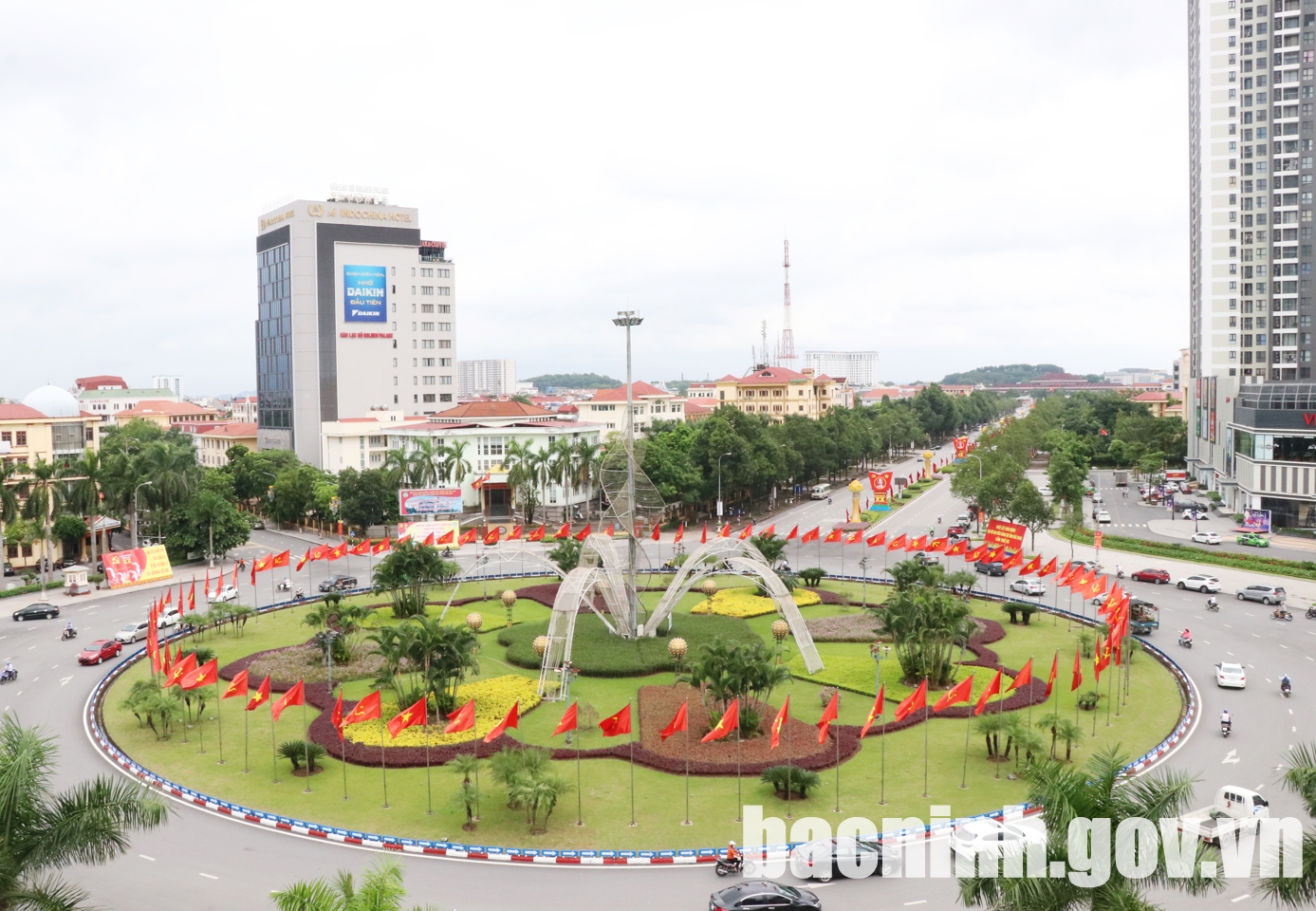After 27 years of re-establishment, Bac Ninh's urbanization rate exceeds national rate of 42.7%
(BNP) - In recent years, the province has focused on directing the planning work to be built in a synchronous direction, accelerating the urbanization process associated with the goal of building Bac Ninh into a basically modern industrial province and becoming a centrally-run city before 2030.

Intersection area, Bac Ninh city.
In 1997, the province only had 08 urban areas, including 01 type IV urban area and 07 type V urban areas. Up to now, the province has 01 type I urban area (Bac Ninh city), 01 type III urban area (Tu Son city), 03 type IV urban areas (Que Vo, Thuan Thanh, Yen Phong urban areas), 04 type V urban areas (Lim town, Tien Du district; Gia Binh township, Gia Binh district; Thua township, Luong Tai district; Nhan Thang urban area, Gia Binh district). The urbanization rate reached 60.3%, exceeding the national rate of 42.7%.
By 2030, Bac Ninh province strives to have 04 cities: Bac Ninh, Tu Son, Tien Du, Yen Phong; 02 towns: Que Vo, Thuan Thanh; 02 districts: Luong Tai, Gia Binh. Therefore, it strives to complete the criteria of type I urban area by 2027 (on the occasion of the 30th anniversary of the province's re-establishment) and become a centrally-run city before 2030.
In the coming time, Bac Ninh will focus on and effectively implement the Provincial Planning for the period of 2021-2030, with a vision to 2050; Bac Ninh Urban Master Plan to 2045 is approved by the Prime Minister. The focus is on effectively implementing 25/26 Zoning Plans approved by the Provincial People's Committee to promptly promote and attract investment in developing urban areas, trade, services, cultural and tourism spaces, regional trade centers; inland container depot (ICD), logistics; developing transport infrastructure (urban railways, underground transport; intra-regional and inter-regional connecting transport such as: Ring Road 4 Project; Gia Binh Airport Project; Kenh Vang Bridge Project...), industrial parks (in the direction of green transformation, digital transformation, circulation, sustainability); improving urban utilities. It also creates connectivity within the province, and promotes regional links with the capital Hanoi and provinces and cities in the Red River Delta.






